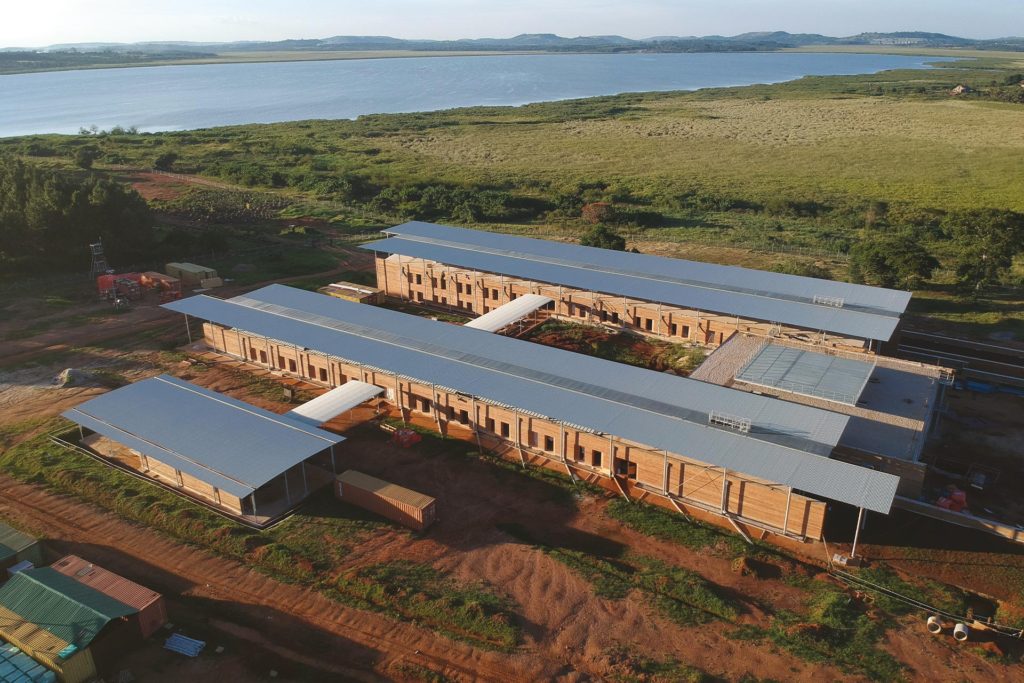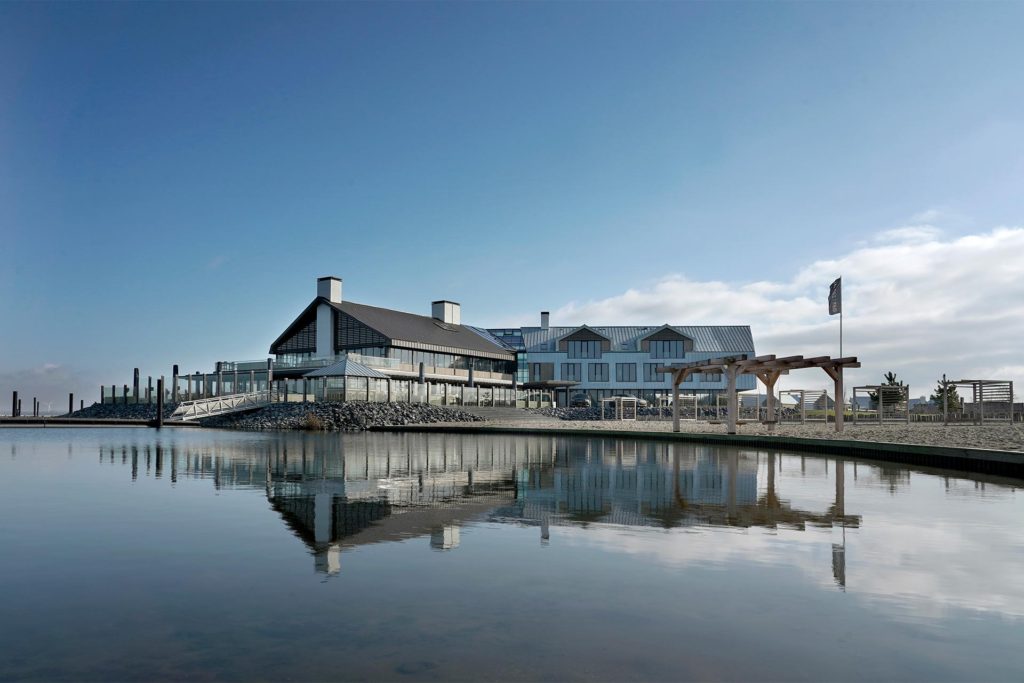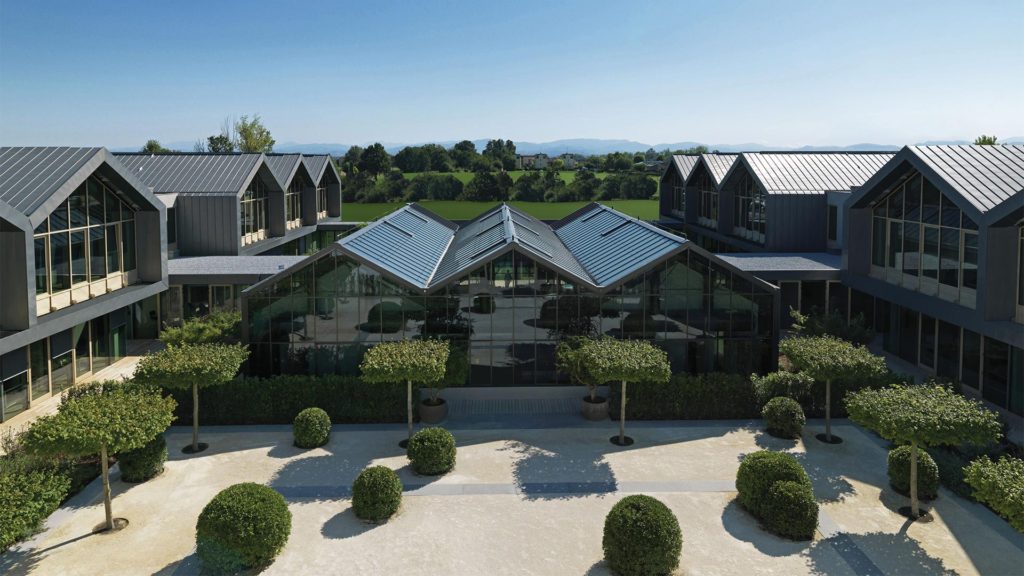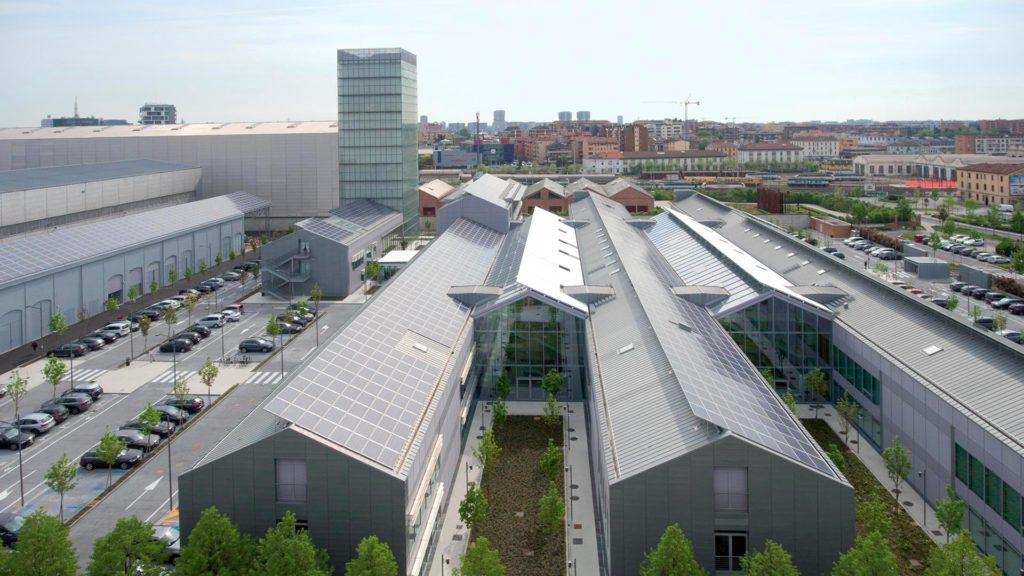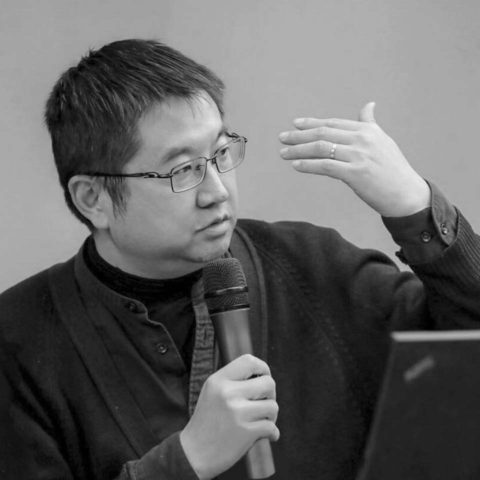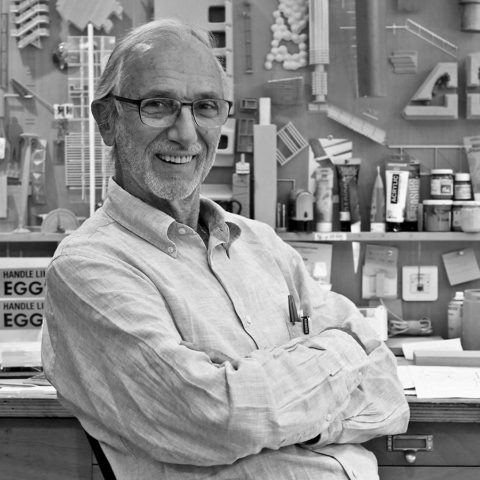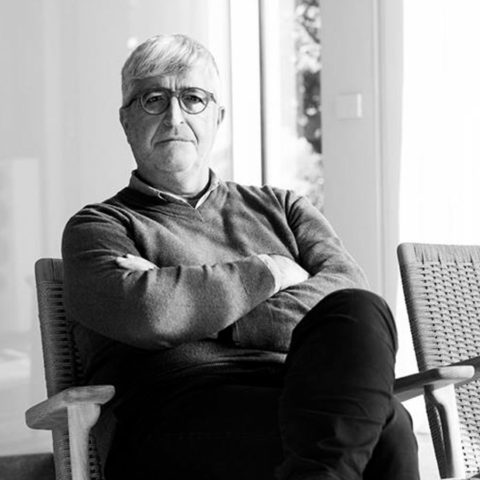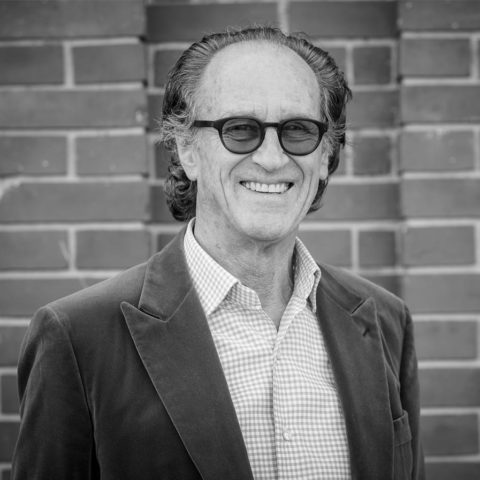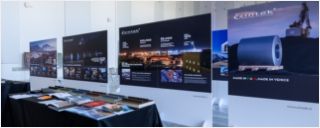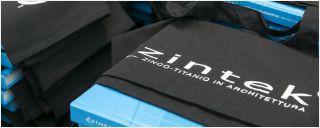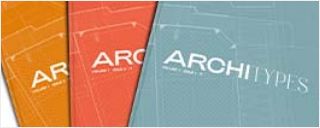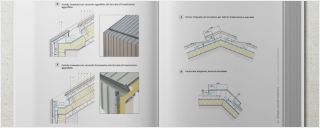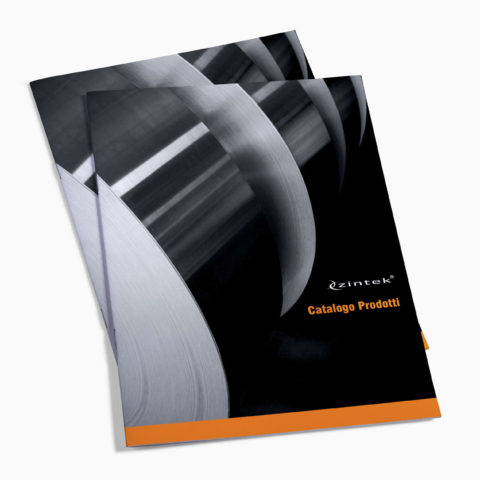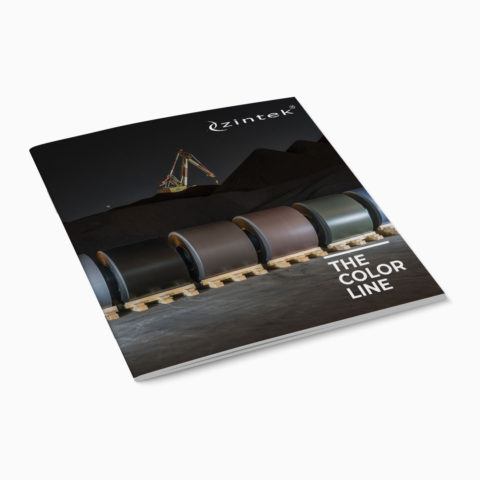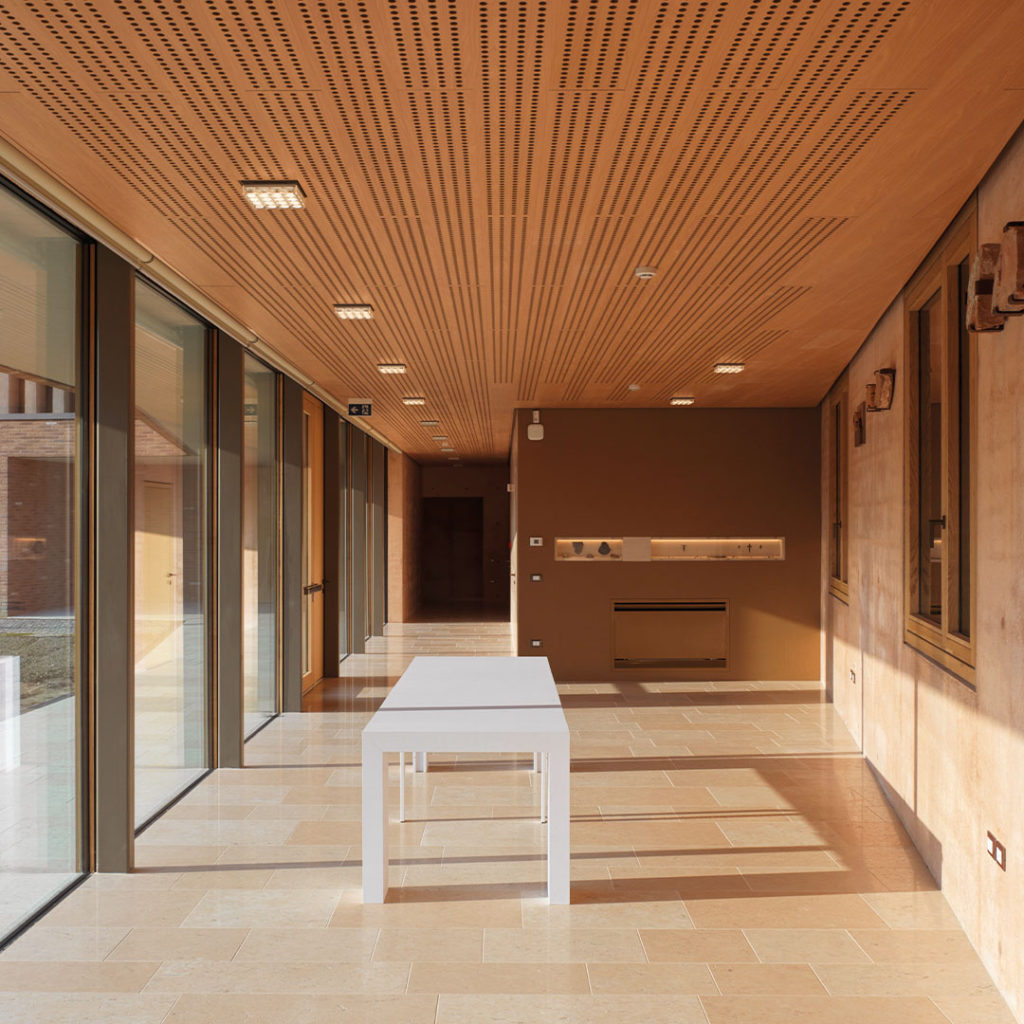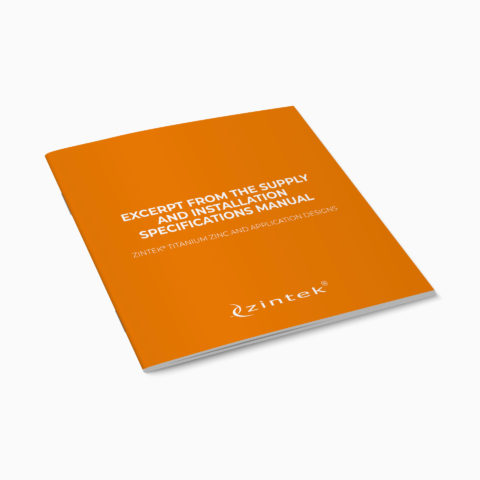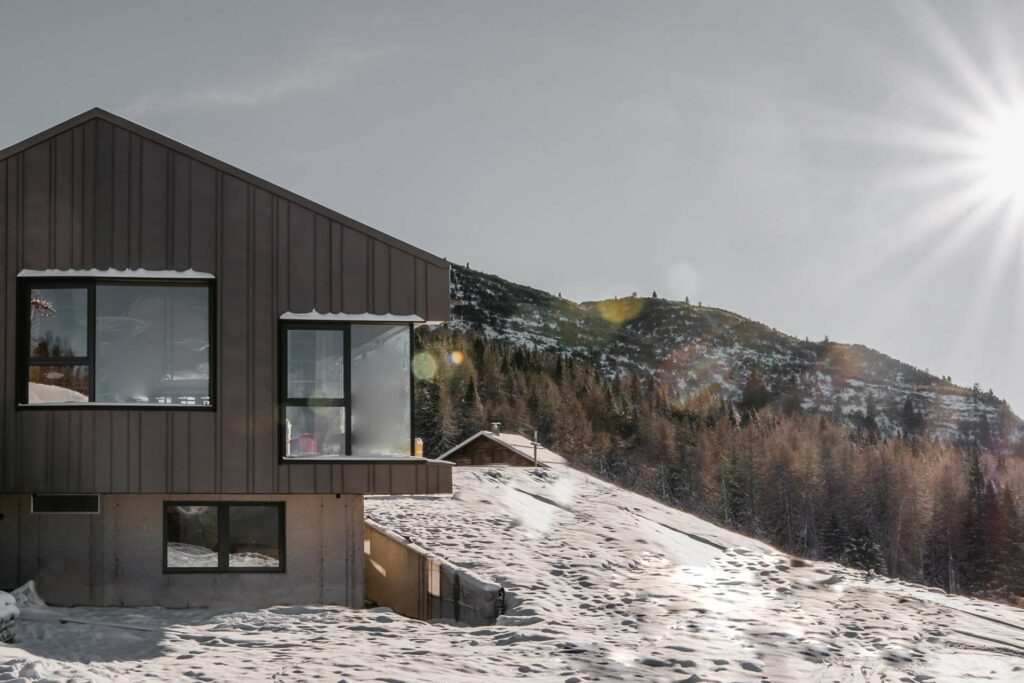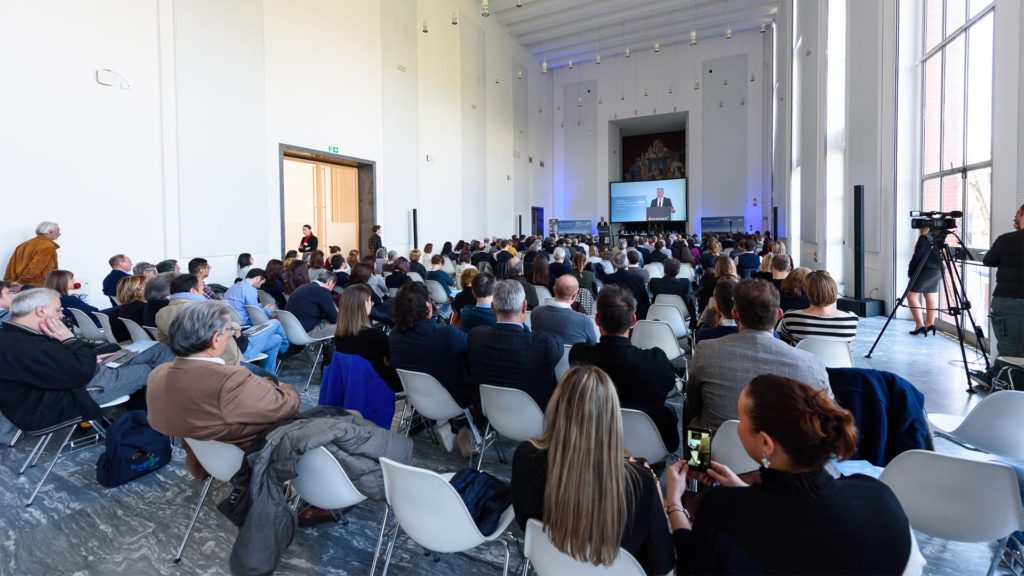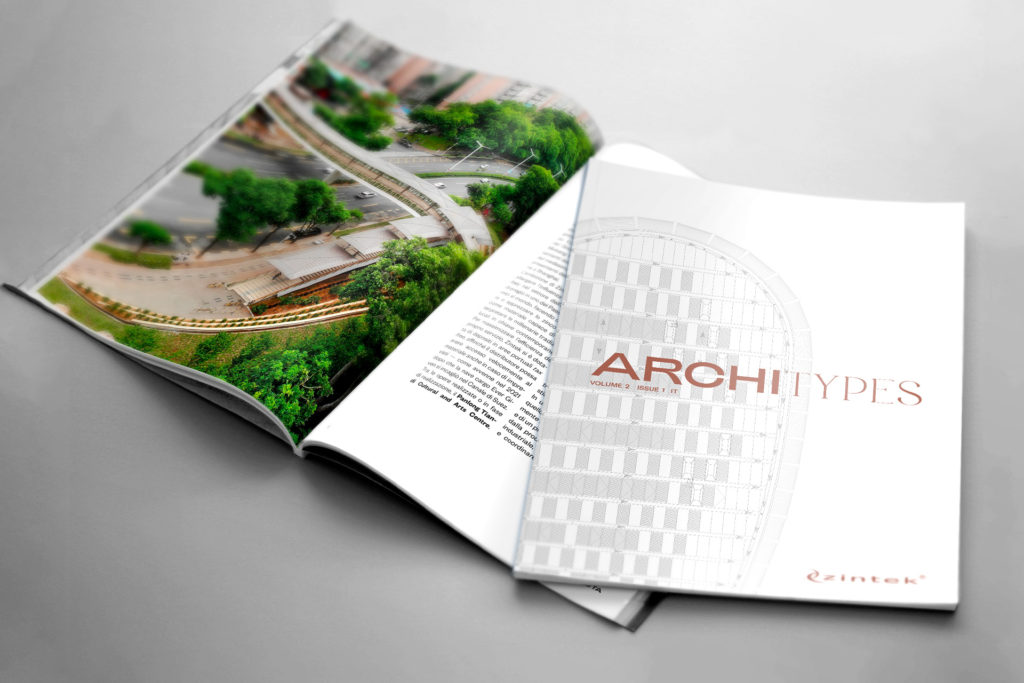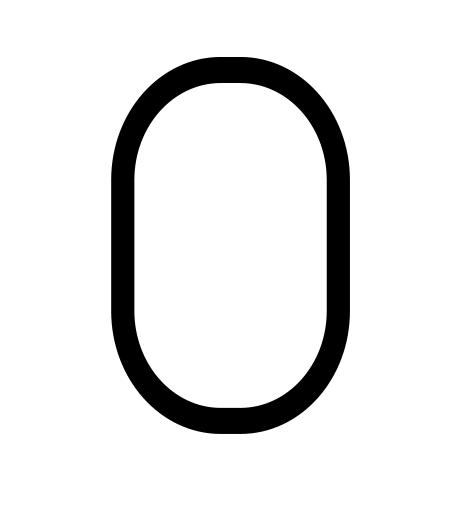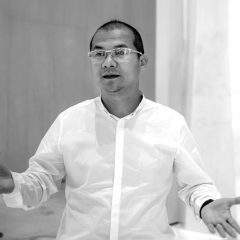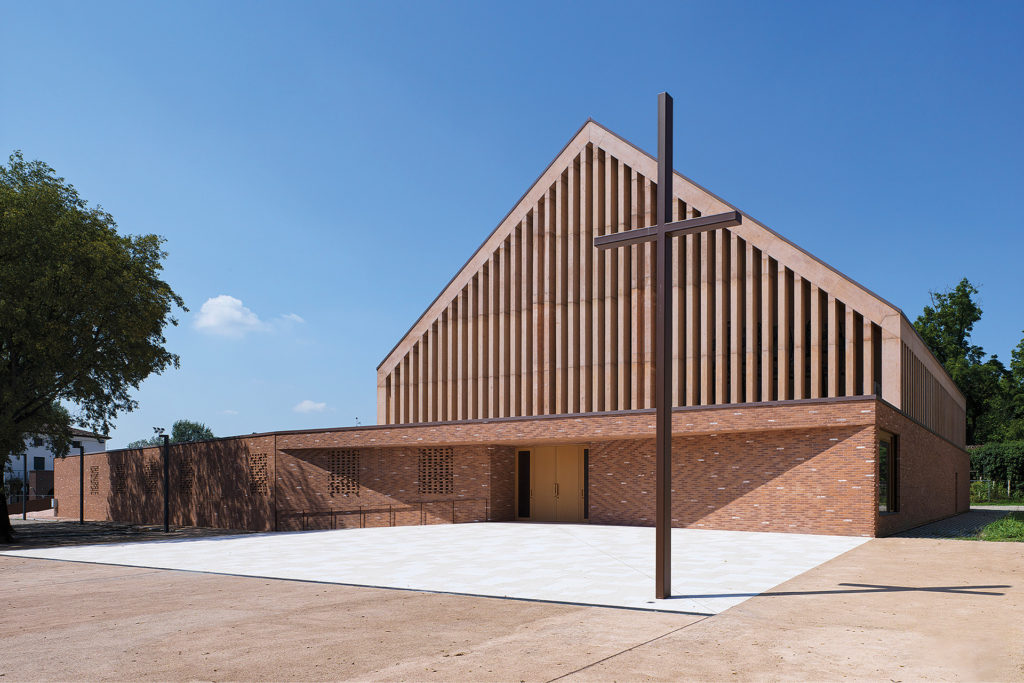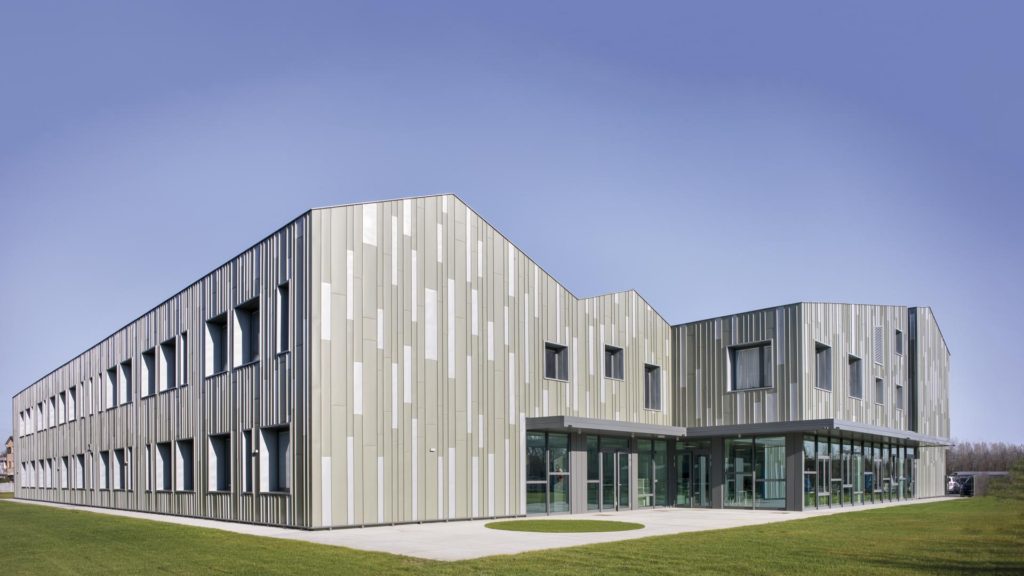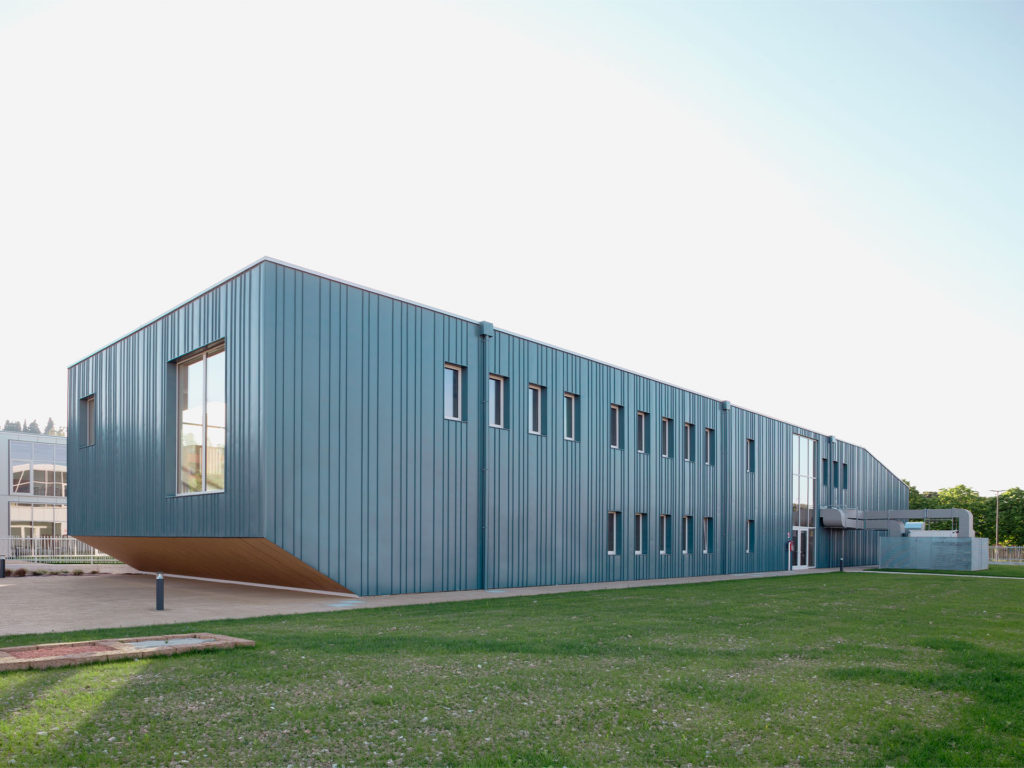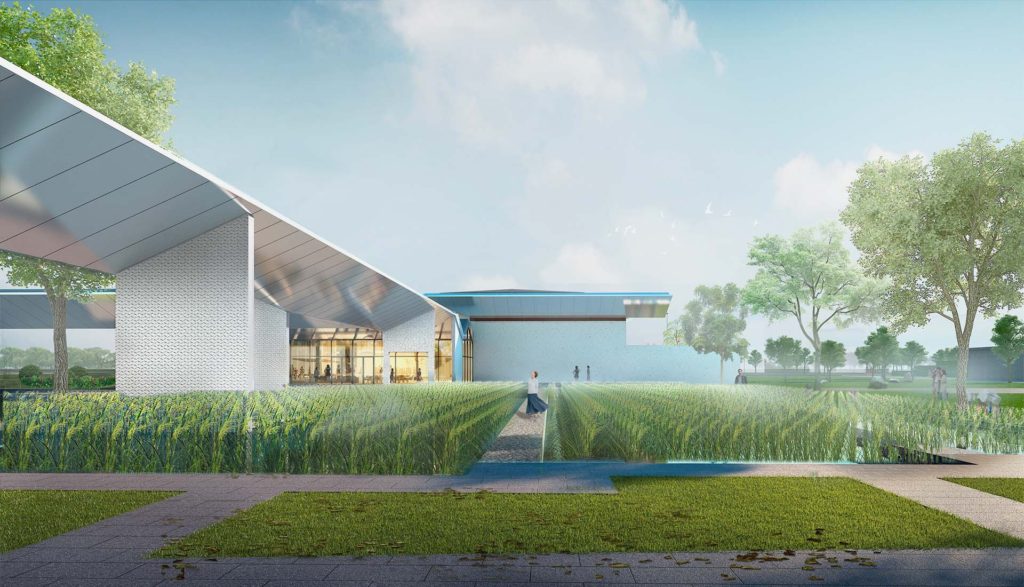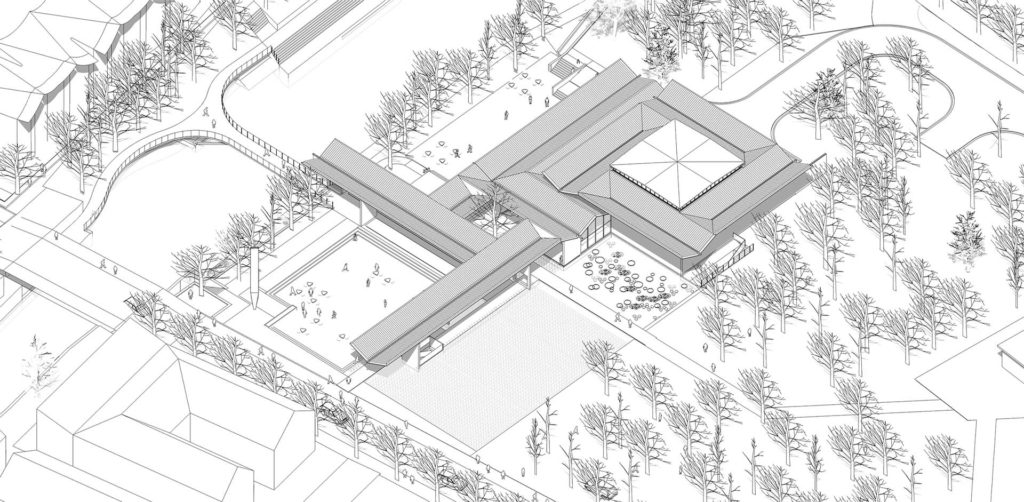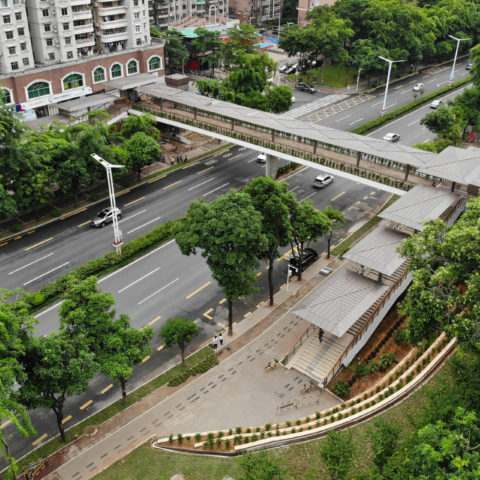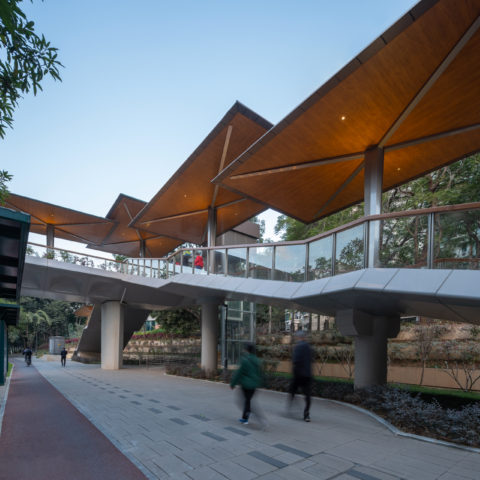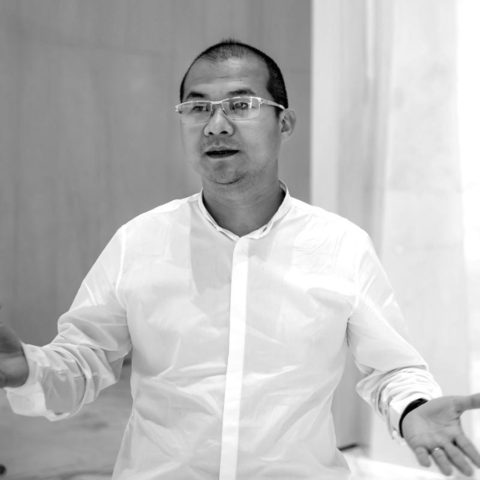The Shuiwei pedestrian bridge is one of the most interesting projects developed in the city of Shenzhen.
The managers of the Shenzhen municipal government have described it as a “legendary construction.”
We have interviewed the architect Fan Tie, director of ATDesignoffice ltd.
The Shuiwei pedestrian bridge has been described as a monumental construction, characterized by a deep connection to nature. Could you explain why?
The Shuiwei brdige is located on Fuquian road, the main street in the Futian neighborhood in Shenzhen. This street features rows of trees on both sides. We wanted this construction to allow people to enjoy the beauty of nature in this part of the city. In order to achieve this goal, we built an umbrella-shaped single-column steel structure to support the roof of the bridge, so that people could enjoy unobstructed views on both sides of the construction. Pedestrian bridges are typically characterized by structures that obstruct the external view. Not in this case. Therefore, when we say that this bridge has a strong connection to nature, we mean the deep connection between the structure and the beauty of the surrounding landscape. When people climb the stairs and reach the upper level on the bridge, thay can enjoy a full view on this part of the city.
Sustainability through careful use of materials, but also through careful use of rainwater, and energy savings: these are important parts of this project. How important is sustainability in your constructions?
As an architect, I always pay great attention to sustainability, and all our projects reflect this approach. In this moment, we are developing a project in Guangzhou: the KIFC, a tower exceeding 250 meters in height that received the LEED EB Platinum certification with the highest rating in the whole of China, and the second highest rating in the world. Obtaining the Leed certification is like winning an Oscar for green constructions. It certifies the fact that we always pay great attention to sustainability in our projects. With regards to the Shuiwei pedestrian bridge, we specifically designed to roof to make conscious use of rainwater. We designed the wings of the canopied roof so that water would pour onto the hedge and then descend even further; basically, water only pours into the frame of the bridge and then goes directly to the plants. This allows us to use rainwater to nourish the plants. Of course, all the materials we used were selected on the basis of their sustainability.
Why did you choose zintek® for this project?
First of all, because it is a highly resistant material. Furthermore, we selected this product for its virtually unique color. zintek® titianium zinc can indeed boast a color that is truly different than that of any of the materials we usually use. And this color perfectly marries the environment surrounding the bridge. It’s a very well-designed material. It can become dirty, be struck by rain, the sun and other climatic factors, it can age, and yet it always looks perfect. Finally, I also selected zintek® because it is a recyclable material.
Which of the characteristics of Zintek and its product proved to be of particular importance for this project?
I think the most important characteristic of zintek® titanium zinc is its lightness. We wanted this structure to be very airy, and therefore we considered the lightness of the material as very important for the project. I also find it to be a material that is very easy to work with. Furthermore, another important and decisive factor was the color. The “Natural earth brown” hue we chose perfectly amalgamates with the characteristic yellow/ochre color of wood, transmitting a sense of warmth, and also offering a pleasant combination with the green of the natural surroundings. Colors are very important in Chinese cities. For example, Shenzhen is represented by two main colors: blue, as the city looks onto the sea, and ochre yellow, because this is the color of the ancient city. This bridge is part of the redevelopment plan for the city, which entails the reconstruction of its connections and an improvement of its infrastructures, and the structure is part of this modernization process. Thus, we opted for warm colors that would work for these goals, and I must say that everything turned out very nicely. It’s a perfect match.
The project for the Shuiwei pedestrian bridge takes into account the needs of the people who cross it (attention to elderly citizens, to pedestrians carrying luggage, etc.) but also to the psychological aspect: do you think design can impact people’s lives?
After we completed this project, I was contacted by many people who wanted to meet me, because they used or saw the pedestrian bridge. Can you believe it? I met people who came to my office to conduct interviews or for other reasons, and each time they wanted to speak of the pedestrian bridge, saying they use it and love it.
The bridge is crossed by a large number of people, as it connects the Huanggang park to many schools and residential areas. People use it during the day, to go to work or to school. And in the evening they appreciate its delicate design that makes use of elegant lighting effects.
When speaking of Chinese style and architecture, where and how can zintek® be used?
This is the first time I used zintek® titanium zinc in my career. Not only did I find it to be a precious product, but I also appreciated that it carries a highly sophisticated and culturally rich philosophy. As it is designed and manufactured by Italians, zintek® marries their philosophy of life, and I like this a lot. I believe Italian products can be widely used in China, but I also think there needs to be more communication and knowledge of the product. The Zintek team here in China has been very active from this point of view, and works to establish a direct contact with architects. I must say that we Chinese people truly appreciate this type of approach. zintek® is still not widely known here, but I am sure that whoever chooses to use it will love it.

